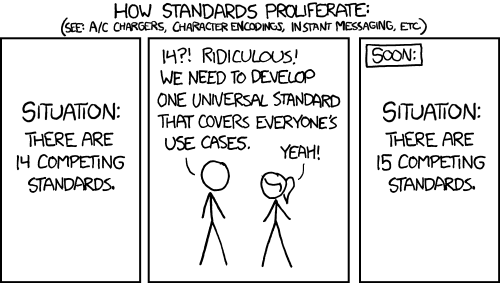WetEV said:
Oddly, in model railroading, the standards are sane: in 1935, a group of model railroaders looked at the state of the hobby, with every manufacturer having a slightly different set of standards, most of them mutually compatible enough to kind-of, sort-of work together, but not enough to do so with any kind of reliability, and they decided to do something about it. So they formed the National Model Railroad Association, invented the concept of open standards, and convinced most of the manufacturers that aspired to produce serious hobby products that they were better off following the free-to-use NMRA standards. And that's what took model railroading from a hobby where most of the time was spent modifying things to work together, to a hobby where most of the time is spent pursuing greater realism, both in appearance and in operation. And even die-hard outliers like Märklin eventually began offering NMRA-compatible product lines.
And then, after decades of various manufacturers marketing proprietary "command control" systems to allow multiple locomotives to operate independently on the same track, and the eventual emergence of a sort-of-open-source system that an advanced electronic hobbyist could build, a German manufacturer ultimately ended up donating their basic standard to the NMRA, which refined and expanded it, and made it free for anybody to implement.
Rather a pity that we don't have that kind of a situation where level-3 EV charging is concerned. But we
do have it for level-1 and level-2.
Be that as it may, I don't sweat the competing mutually incompatible level-3 charging standards, probably because in 9 months, I've never had a reason to plug into a level-3 charging station. The trip distance when I start looking for a way to get where I'm going by train is less than half my nominal range. If I'm going to a concert at Disney Hall or Hollywood Bowl, or to the museums in Exposition Park, I'll park at the Wardlow Blue-Line station, and take MetroRail. If I'm going to the San Diego Zoo, or the Spreckels Organ Pavilion, I'll park at the Irvine Amtrak station and catch the Surfliner, and then take the trolley and a bus to Balboa Park. And if I'm actually going someplace that's beyond half my range, that can't be reached by train (e.g., the San Diego Wild Animal Park [now officially the San Diego Zoo Safari Park]), well, I'll probably want to spend the night anyway. And the Wild Animal Park
does have charging stations in its parking lot. As does, I believe, at least one local drugstore.

